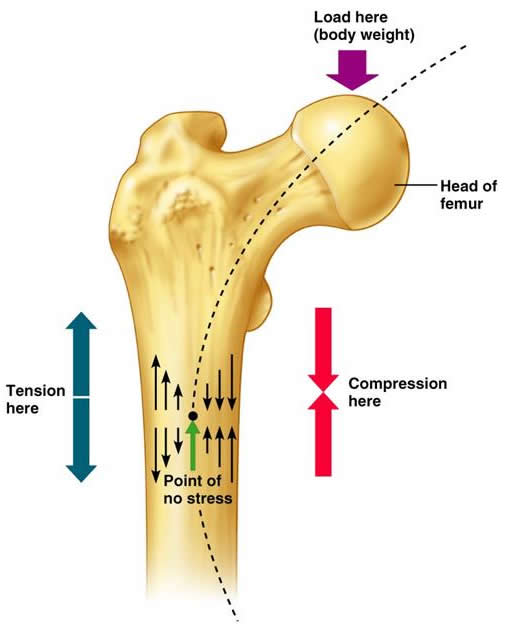Nature's Unifying Patterns
Detailed descriptions and examplesNature tends to optimize rather than maximize.
Because energy and materials are so precious, nature seeks a balance between resources taken in and resources expended. Energy spent on excess growth, for example, could result in insufficient energy reserves or characteristics that harm an organism’s ability to survive and reproduce, which means that it won’t be able to pass on its genes. There are checks and balances in both organisms and ecosystems, some of which occur over generations. Growth for growth’s sake will result in harmful side effects. Sometimes these side effects are immediately apparent and possibly reversible, and sometimes they remain hidden for a long time until reversal is too late.
Biology Examples

Forces affecting bone growth.
Bones
Bones respond to stresses placed upon them by adding material (calcium) where more is needed to provide strength. This is why women are encouraged to do weight-bearing exercises to prevent brittle bones as they age. While a heavy bone may be stronger (e.g., the weight is maximized), the energy costs of the body carrying around extra weight is high. Therefore, if the body senses that the bone doesn’t need strength in some areas, it removes the calcium (e.g., the weight is optimized).
Design Applications

Tiny houses
There is a growing community of people who are designing and living in ultra-efficient “tiny houses.” Many examples are barely more than 100 square feet (or less than 10 square meters) but provide all the basic functions of a full-sized home using a variety of design strategies.
Image Credits
Bone growth: via Midlands Technical College
Tiny house: Nicolas Boullosa CC-BY


